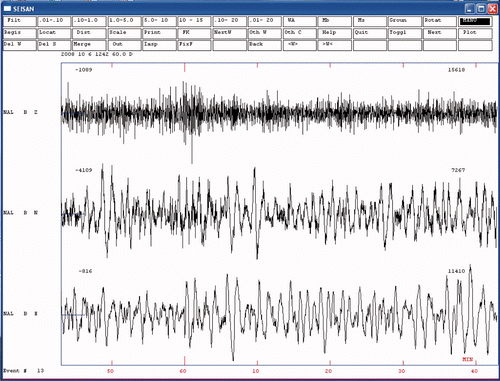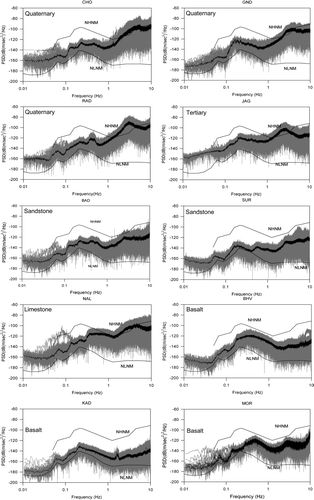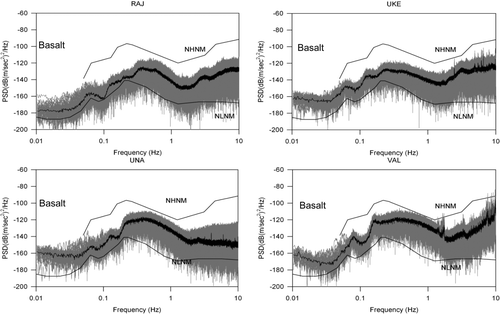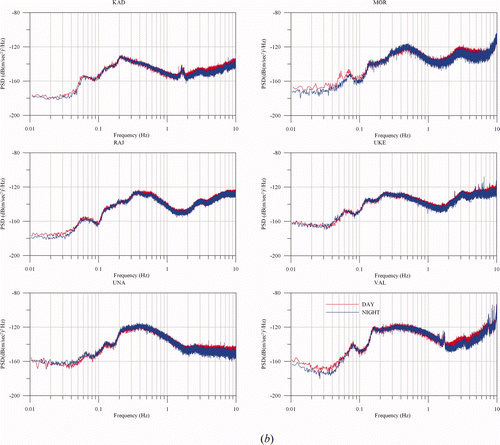Figures & data
Table 1. Online broadband seismograph (BBS) seismic stations of GSNet and local geology.
Figure 1. Geology of the Gujarat showing the permanent online seismic stations used for the study. Available in colour online.

Figure 2. Block diagram showing the design of the vault room in which the installation of CMG-3T has been carried out and the recording room at the Permanent Broadband Seismograph Station. Available in colour online.

Figure 3. A sample record of the 1 hour of seismic background noise (SBN) at the permanent seismic station Naliya on the limestone. Available in colour online.

Figure 4. Comparison of the vertical component median seismic noise of 14 stations with the US Geological Survey high and low noise models of Peterson (Citation1993). The power spectral densities (PSDs) are in units of dB with respect to acceleration (reference level 1(m/s2)2/Hz). The grey lines represent the noise spectra of 30-min time windows and the dark lines represent the medians of these. The station codes are at the top of each figure.

Figure 5. (a) Day and night comparison of the vertical component median seismic noise of 14 stations. The power spectral densities (PSDs) are in units of dB with respect to acceleration (reference level 1 (m/s2)2/Hz. The station codes are at the top of each figure. (b) Day and night comparison of the vertical component median seismic noise of 14 stations. The PSD is in units of dB with respect to acceleration (reference level 1 (m/s2)2/Hz. The station codes are at the top of each figure. Available in colour online. Available in colour online.


